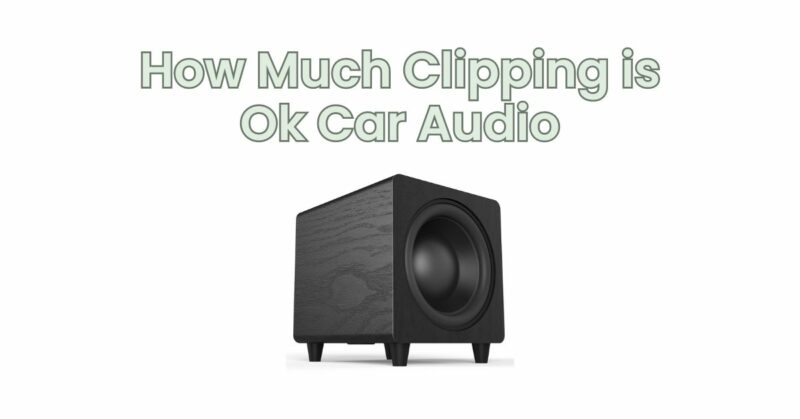Clipping is an undesirable phenomenon in car audio systems that occurs when the audio signal being amplified exceeds the limits of the amplifier’s capabilities. It can result in distorted sound reproduction and potential damage to the speakers. Understanding how much clipping is acceptable in car audio is crucial for achieving optimal sound quality and preserving the longevity of your audio system. In this article, we will discuss the concept of clipping in car audio and provide insights into the acceptable levels of clipping.
What is Clipping? Clipping occurs when the peaks of an audio signal exceed the maximum voltage output of the amplifier. When this happens, the amplifier is unable to accurately reproduce the waveform, resulting in distortion. Clipping is most commonly observed in high-power systems or when the amplifier is pushed to its limits.
Understanding Acceptable Clipping Levels: While clipping should generally be avoided in car audio systems, it is important to recognize that some degree of clipping may be inevitable, especially during transient peaks in the music. However, it is crucial to keep clipping within acceptable limits to minimize distortion and potential damage to the speakers.
- Head Unit and Amplifier Settings: Properly setting the gain and volume levels on the head unit and amplifier is crucial to prevent excessive clipping. It is recommended to follow the manufacturer’s instructions and guidelines for setting these parameters. Generally, the gain should be set to a level that allows the amplifier to amplify the audio signal without introducing significant distortion.
- Monitoring the Audio Output: To assess the level of clipping, it is essential to actively monitor the audio output during playback. Listen for any audible signs of distortion, such as harshness, crackling, or muddiness in the sound. If you notice noticeable distortion, it indicates that clipping is occurring, and adjustments to the system settings are necessary.
- Oscilloscope or Clipping Detection Tools: Using an oscilloscope or dedicated clipping detection tools can provide a more accurate measurement of the audio signal and help identify the onset of clipping. These tools display the waveform and indicate when the signal reaches the amplifier’s limits, allowing you to adjust the system accordingly.
- Aim for Minimal Clipping: While it is difficult to completely eliminate clipping, the goal should be to minimize its occurrence. Ideally, you should aim for no more than 1-2% of clipping during normal listening conditions. This ensures that the audio signal remains largely undistorted and preserves the integrity of the music.
Clipping in car audio is a common concern that can impact sound quality and potentially damage speakers if not kept in check. While some degree of clipping may be unavoidable, it is important to minimize its occurrence and keep it within acceptable limits. Properly setting the gain and volume levels, actively monitoring the audio output, and using tools like oscilloscopes or clipping detection devices can help assess and address clipping issues. By striving for minimal clipping, you can achieve cleaner and more enjoyable sound reproduction in your car audio system while safeguarding the health of your speakers.


